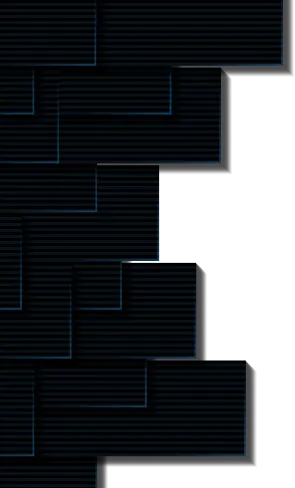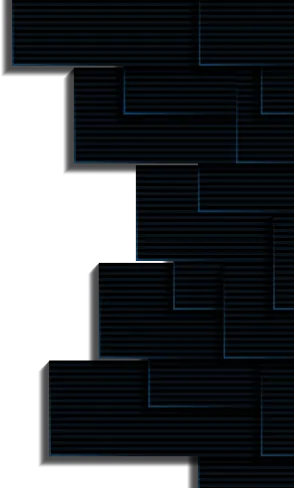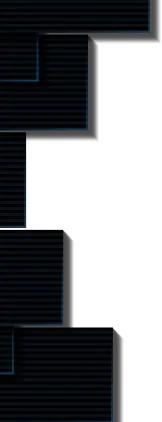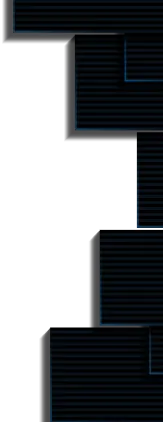Down the Rabbit Hole: Decentraland, the very first metaverse built on Ethereum!
Author: Nirbhik

It was in 2018, and since then, the decentralized virtual world has only grown in popularity. Decentraland is the first and most well-known metaverse based on Ethereum. You can purchase land, build structures on top of it, visit & play with your friends.
Know more about Metaverse from our Learn series!
Basics about Decentraland & $MANA that fuels the ecosystem
Decentraland refers to the crypto-fueled virtual world with the quickest growth. It got founded in 2016. Its user interface is heavily influenced by Second Life and Minecraft, one of the most popular multiplayer games on the planet.
Decentraland differs from previous virtual worlds in that all of the areas (referred to as LAND in the game) can be owned, sold, and developed by the game’s users, except for roads and plazas. The Ethereum blockchain records ownership of those virtual properties, making them easily transferable and preventing fraud.
The information published on their land pieces, identified by some cartesian coordinates, is within the landowner’s control. Content may range from static 3D models to interaction designs like casinos, games, art exhibitions, and anything else developers can think of. There’s a thriving community of 3D artists, animators, and engineers working on these virtual places, inventing new ways for people (as avatars) to mingle and engage.
Decentraland uses the Ethereum blockchain to allow users to create, then navigate, develop on, and monetize.
Decentraland raised $24million in 2017 through an initial coin offering (ICO). The virtual environment was released to the public in February 2020 after a closed beta period in 2019. Users have since built a variety of interactive experiences on their LAND parcels, including interactive games, sprawling 3D scenes, and several other interactive activities.
LAND and MANA are the two tokens that the Decentraland uses. For obtaining the non-fungible ERC-721 LAND tokens, MANA is an ERC-20 token to burn. On the Decentraland marketplace, MANA tokens help purchase a variety of avatars, wearables, names, and other items.
The total, as well as the maximum supply for MANA, is $2.19 billion. However, the current supply of MANA from the Decentraland is $1.82 billion. The overall supply was initially set at 2.8 billion MANA, but it has since lowered due to the burning of over 600 million MANA due to LAND auctions. A variety of other burn mechanisms, including a 2.5% MANA burn on Decentraland marketplace transactions, are in place to further restrict the circulating quantity of MANA.
Sandbox is yet another prominent metaverse apart from Decentraland, and you can learn more about it from our blog.
Decentraland’s LAND
Each LAND plot is 16 X 16 meters and is represented as an NFT (non-fungible token). An NFT is a representation of a unique digital asset (here as virtual real estate) on the blockchain.
MANA, Decentraland’s official cryptocurrency, can be used to purchase LAND. MANA is a cryptocurrency that can be bought and traded on several prominent cryptocurrency exchanges. One MANA was worth $2.84 as of November 3rd, 2021.
LAND pieces can be purchased both in-game and on NFT marketplaces such as OpenSea. Remember that cryptocurrencies are volatile, and most people buy them for the sake of speculation.
The developers own everyday spaces, plazas, and roadways in Decentraland and cannot be purchased or sold by users. A primary driver of the LAND value in Decentraland is the shortage. Space is finite, just like it is in the real world, making it potentially valuable to own real estate in this Metaverse. Wish to know more about Metaverse? Check out this blog on Metaverse!
What does a digital land do?
The importance of community in Decentraland (and other virtual worlds) cannot be overstated. Like real-world real estate, virtual land is valuable not just because of where it locates within each Metaverse but also because of how its owners choose to develop it. MANA (Decentraland’s digital currency) and land acquisitions get fueled by excitement about the potential of what to build in the Metaverse. Users are enticed to visit virtual land to play games, digital art to view, communicate with new people, & earn money. The following are the most popular developments in Decentraland:
- Owners of digital NFT art can display and sell their work in art galleries.
- Decentraland Games launches casinos inside metaverse.
- Decentraland music venues where DJs and musicians perform music and hold concerts.
As more real-world brands use the Metaverse to engage with, advertise to, and connect with users and consumers, digital real estate in the Metaverse is likely to rise in value. For example, land in Decentraland sold for $500 in early 2019 is now worth more than $7,500.
Read our blog from the Learn Web3 series to know more about Metaverse.
How does Decentraland work?
The Decentraland application tracks LAND token-defined real estate properties.
The software uses the Ethereum blockchain to monitor ownership of this digital land. Users must keep their MANA token in an Ethereum wallet to interact with its ecosystem.
Developers are also free to experiment with Decentraland’s platform by customizing the animation and interactivity that users see on their virtual properties.
- Architecture
Decentraland’s architecture has numerous layered components created using Ethereum smart contracts. Here is a blog on Smart Contracts to help you clear the concept!
The consensus layer keeps track of land parcel ownership through a ledger. Each LAND parcel contains a virtual world coordinate, an owner, and a link to a description file that describes the information within the parcel.
The content layer is in charge of what happens inside each parcel and includes the following files:
- Content Files – All static audio and graphics get referenced in it.
- Interaction Definition – Peer-to-peer interactions such as gesturing, voice chat, and messaging.
- Script Files – Describing the placement and behaviour of the linked content.
Finally, using user avatars and voice chat and messaging, the real-time layer supports social interactions within Decentraland. - Marketplace and Builder
The Decentraland team has also developed a marketplace and a drag-and-drop editor for users to create settings outside of the gaming area.
Participants can use the marketplace to manage and exchange LAND tokens, priced in MANA. Owners can use the marketplace to buy, sell, and trade parcels and other in-game products like wearables and unique names.
It’s worth noting that all transactions resolve between Ethereum wallets and thus are validated by Ethereum’s network and recorded on its blockchain.
Owners can use Decentraland’s building tools to create a one-of-a-kind experience within their LAND plots. Developers can access customization libraries and payment implementations through its editing tool, which allows them to create interactive scenes.
What sets Decentraland apart?
Decentraland is a platform for content creators, enterprises, and individuals seeking a new artistic medium, financial opportunity, or source of entertainment.
The Decentraland metaverse is divided into 90,601 unique LAND parcels. Each of these gets represented as a Non-fungible token (ERC-721).
Though LAND owners have complete freedom to develop their plot into whatever they want, much of the Metaverse is split into various districts, each with its size and concept. The cyberpunk-themed Aetheria is the largest district, with a total of 8,008 LAND as of January 2021.
Decentraland is also one of a growing number of projects that make governance decisions using a decentralized autonomous organization (DAO) structure. As a result, MANA toker holders have a say in how the Decentraland world operates, including proposing and voting on policy changes, upcoming LAND auctions, and the type of content permitted in the Metaverse.
You can also read more about DAO from our blog!
Many Decentraland users presently monetize their LAND through leasing, advertising, and paid experiences, in addition to being a creative outlet. Other users monetize by making and selling things on the Decentraland marketplace in exchange for MANA tokens.
Investments in Decentraland
Real estate is all about location, just like in real life. Closer parcels to Genesis Plaza (the game’s entry point) and various districts like Vegas City, Crypto Valley, and Dragon City are usually more valuable than others. Similarly, lots at intersections are more valuable than those not so close.
Purchasing contiguous parcels in Decentraland can result in the creation of an “estate.” The ability to build more excellent developments is a benefit of owning an estate. People from all over the world can attend virtual gaming conventions, meet in a virtual location for watching a real-world sporting event, or pitch ideas to potential investors in a virtual Silicon Valley dubbed Crypto Valley (using their avatars, of course). This is why it is critical to own a large number of nearby lots. Owners can rent out this land to generate cash flow and potential income from renters.
Always look at comparable assets, just like you would when completing due diligence on real estate in the actual world. When looking to buy a home, one of the first things you should do is check at nearby similar houses to get a sense of price and value.
In Decentraland, the same reasoning applies: instead of basing your estimations on the sales price, check out the sales history of similar parcels in adjacent places.
Why Now?
Well-known brands are making their mark on the Metaverse, and reputable investors are following suit, seeing Decentraland and other metaverses as new investment prospects.
Individuals are turning to the Metaverse for amusement and interaction in record numbers when socialization has been forced to the internet.
The more content users can interact with, the more interesting (and lucrative) the Metaverse grows, drawing more users and hence more corporate sponsorships.
The NFT market tripled in size in the previous year, and this trend is expected to continue into 2021. People will need a place for storing, displaying and wearing their digital assets while investing in NFTs, which will be in metaverses like Decentraland.
MANA, the cryptocurrency of Decentraland, has risen by 80% to a market valuation of more than $2 billion. The virtual world’s token has increased to $1.26 at last check, owing to Facebook’s statement that it will change its corporate name to Meta to reflect a greater focus on the Metaverse.
Continue reading about Decentraland from our Learn Web3 series!





Subscribe to receive Alpha!
Join 4.3k subscribers from renowned companies worldwide and get a weekly update in your inbox. Stay updated on the latest and finest projects and product updates.

